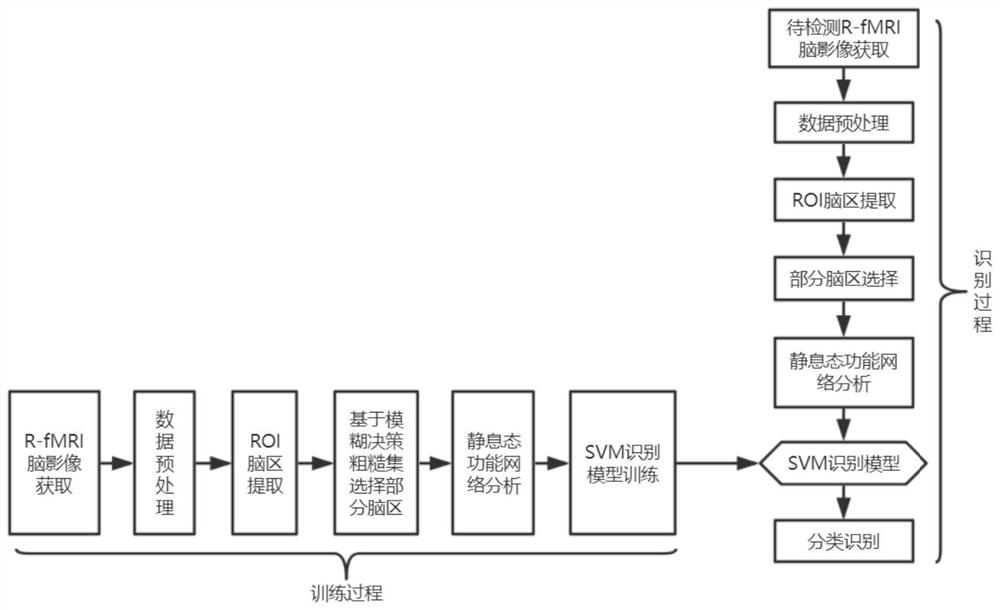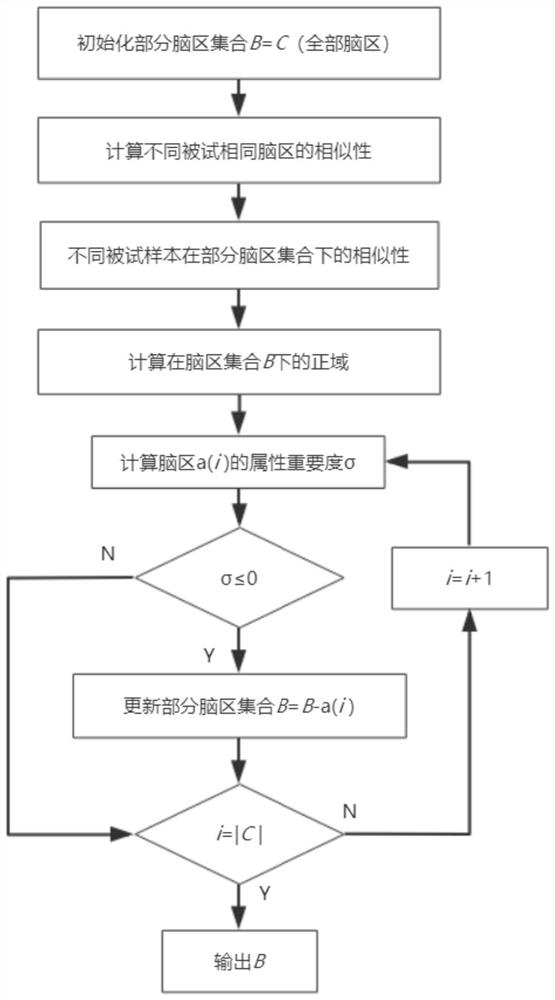fMRI data classification and identification method and device based on brain area function connection
A technology of data classification and recognition methods, which is applied in image data processing, character and pattern recognition, image analysis, etc., and can solve problems such as the curse of dimensionality
- Summary
- Abstract
- Description
- Claims
- Application Information
AI Technical Summary
Problems solved by technology
Method used
Image
Examples
Embodiment 1
[0024] This embodiment provides a method for classifying and identifying fMRI data based on the functional connectivity of brain regions. According to the determined subject of fMRI data classification and identification, the subject's fMRI data is divided into two corresponding categories: Class A and Class B, such as figure 1 As shown, the data classification identification method mainly includes the following steps:
[0025] Step 1: fMRI data acquisition: According to the object to be studied, the brain images of the subjects are divided into Type A and Type B, and the resting-state functional magnetic resonance imaging data of Type A and Type B subjects are obtained;
[0026] Step 2: Preprocess the acquired R-fMRI brain image data by DPARSF software to achieve data standardization and eliminate external interference signals, including slice time layer correction, head motion correction, spatial standardization, spatial smoothing, linear trend elimination, time Bandpass fil...
Embodiment 2
[0076]This embodiment provides a specific method for fMRI feature extraction and recognition based on the functional connectivity of partial brain regions. For example, autism is determined to be the subject of fMRI data classification and recognition, and fMRI data is divided into Class A and Class B, representing the brain respectively. The steps to connect abnormal subjects and normal brain connections are as follows:
[0077] Step 1: Select R-fMRI brain images of 184 subjects provided by NYU Langone Medical Center from ABIDE (http: / / fcon_1000.projects.nitrc.org / indi / abide / abide_I.html) , the age distribution of the subjects is under the age of 18. Among them, there were 79 Type A subjects, with a male-to-female ratio of 68 / 11, an average age of 14.52 years, and an average PIQ (Performance Intelligence Quotient) of 104; there were 105 Type-B subjects, with a male-to-female ratio of 79 / 26, an average age of 9.46 years, and a PIQ of 104. Mean 113.
[0078] Step 2: Use DPARS...
Embodiment 3
[0115] This embodiment provides an fMRI data classification and identification device based on functional connectivity of brain regions, which can implement the method described in Embodiment 1, and the device includes:
[0116] Brain image acquisition module: used to acquire brain magnetic resonance imaging (fMRI) data of subjects;
[0117] Data preprocessing module: used to preprocess the acquired brain magnetic resonance imaging data to obtain brain gray matter images;
[0118] Brain partitioning module: used to divide the gray matter image of the brain into multiple brain regions with different functions, and extract the average voxel time series of each brain region;
[0119] Brain region selection module: used to select some brain regions with significant differences from multiple functional brain regions based on fuzzy decision-making rough sets;
[0120] Transformation matrix module: used to calculate the Pearson correlation coefficient between different brain regions...
PUM
 Login to View More
Login to View More Abstract
Description
Claims
Application Information
 Login to View More
Login to View More - R&D
- Intellectual Property
- Life Sciences
- Materials
- Tech Scout
- Unparalleled Data Quality
- Higher Quality Content
- 60% Fewer Hallucinations
Browse by: Latest US Patents, China's latest patents, Technical Efficacy Thesaurus, Application Domain, Technology Topic, Popular Technical Reports.
© 2025 PatSnap. All rights reserved.Legal|Privacy policy|Modern Slavery Act Transparency Statement|Sitemap|About US| Contact US: help@patsnap.com



